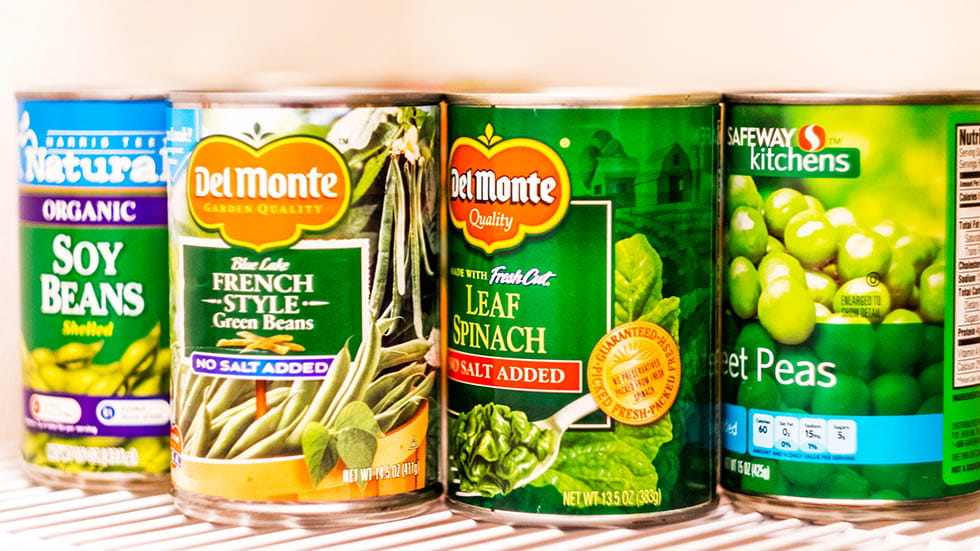Pandemic stockpiling and holiday food shopping have filled fridges, freezers, and cabinets to capacity. With the New Year comes the urge to purge. Knowing what to pitch and what to keep, however, can be a challenge.
DECIPHER DATE LABELS
Expiration dates can be confusing—if, that is, you see one at all. Federal law only requires an expiration date on baby formula.
You’re more likely to see:
- “Best if used by/before,” which is the manufacturer’s recommendation for the consumer. After that date, the manufacturer can’t vouch for the quality, texture or taste.
- “Sell by” is a guide for retailers.
- “Use by” also refers to quality—unless it’s on baby formula.
TACKLE THE SPICE CUPBOARD
Old seasonings probably won’t make you ill, but they “don’t serve their purpose as intended,” says Gianna Stanley, a private chef in Richmond, Virginia.
Trent Blodgett, the founder of the Spice Tribe, agrees. He says, “spice blends last from three to six months, and single spices for up to a year.”
McCormick, which makes spices and seasonings, takes a longer view. The company has a shelf-life chart on its website. Here are some examples:
- Vanilla extract and salt can last indefinitely. (Add honey to that list.)
- Other extracts are suitable for two to three years.
- Whole and unground spices like peppercorns stay viable for up to four years.
- Ground spices lose their usefulness in two to four years.
- Ground and whole leafy herbs keep their potency in one to three years.
If you don’t want to open each container, follow food writer Anna Rider’s example. Rider, who develops recipes for GarlicDelight.com, sniffs spices before adding them to food. “If it smells rancid or stale, I toss it out,” she says. She then puts the spice on her grocery list.
To get the most from your spices, Blodgett has the following tips:
- Store them in airtight containers.
- Keep them away from heat and light.
- Buy spices from one source, and make your own blends.
- Avoid pouring spices directly into a pot; steam can cause the spices to clump.
- Buy in small quantities.
FACE THE FRIDGE
A simple whiff will tell you if an item has gone bad. But if you need help, FoodSafety.gov offers a cold-food storage chart with guidelines. (The stated freezer storage recommendations only refer to the quality; properly frozen food can last indefinitely.)
For instance, an unopened pack of hotdogs will last one week in the fridge; one to two months in the freezer. Keep steaks three to five days in the refrigerator and up to 12 months in the freezer.
For information on condiments, dairy and other products, visit the FoodKeeper App on FoodSafety.gov.
To track cold foods:
- Write the date on the opened item when you put it in the fridge.
- Put new groceries in the back of the fridge and move older items toward the front. “This allows me to see what ingredients need to be eaten,” Rider notes. (Note that some products last longer in particular areas. Read the manufacturer’s guidelines.)
PRETTY UP THE PANTRY
According to the U.S. Department of Agriculture, canned goods fall into two categories:
- High-acid foods, such as tomatoes, which are good for up to 18 months.
- Low-acid foods, such as meat and vegetables, which can last up to five years.
Since a tiny amount of botulism toxin can be deadly, discard:
- Cans that are dented, bulging, or leaking.
- Cracked jars or those with bulging lids.
As for pasta and rice, the website EatByDate.com notes that properly stored dry pasta can last up to two years past the expiration date. The longevity of rice depends on the packaging and whether it’s stored on the shelf or in the refrigerator. Some maintain that properly packaged rice can last indefinitely.
When you open the package or container, look for rice weevils, a reddish-brown bug. Weevils can also get into dried beans, which begin losing their nutritional value after two or three years.
The life of flour depends on the type and the way it’s stored. But it can spoil—and faster than you might think. Regular white flour lasts up to a year on the shelf and longer in the fridge. It’s best to keep it in an airtight container, and note the “best by” date with a marker on the lid.
For storage, Boston-based Rhea Becker, The Clutter Queen, recommends high-quality products, such as those made by OXO. “These containers will keep your grains and items fresh and keep vermin out,” she says.
For more information on Food Product Dating, visit USDA’s Food Safety and Inspection Service.


















